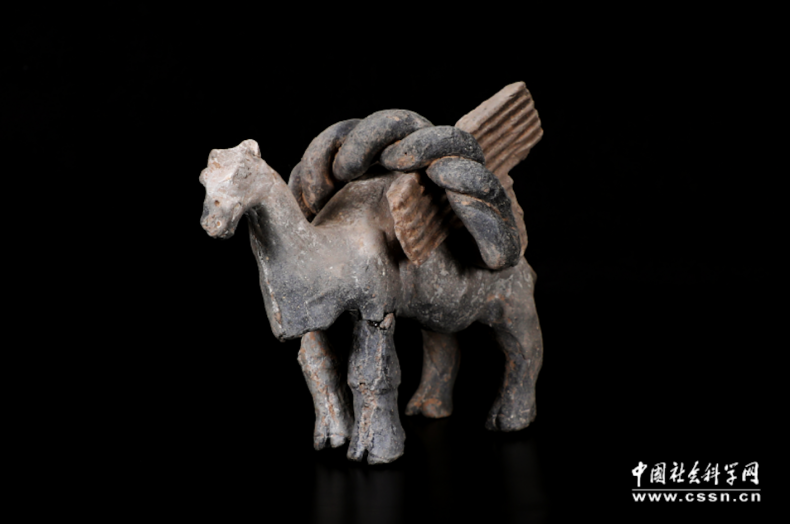Archaeologists have discovered the tomb of an ancient emperor in China that dates to around 1,500 years ago.
The tomb was uncovered in Xianyang, Shaanxi province, in north-central China, the Shaanxi Academy of Archaeology announced on Tuesday.
Researchers say the tomb belongs to the founding emperor of China’s Northern Zhou dynasty, which lasted from 557-581 A.D., based on an epitaph located on the eastern side of its entrance.
This ruler is known by his personal name, Yuwen Jue. He was born in 542 A.D. and died in 557 A.D. at the age of 15. When he came to power, Yuwen Jue took the throne as Emperor Xiaomin of Northern Zhou, but he used the alternative title of Tian Wang or “Heavenly Prince.”

The tomb of Emperor Xiaomin that was uncovered in Xianyang, China. Known by his personal name, Yuwen Jue, the ancient Chinese ruler was the founding emperor of the Northern Zhou Dynasty.
China Social Science Network
In 557 A.D., the emperor’s cousin, Yuwen Hu, deposed him amid a power struggle and later had him killed
The emperor’s tomb, which consists of a single chamber, measures just over 186 feet in total length from north to south and has a ditch leading into it. The bottom of the tomb lies over 30 feet below the surface. By the standards of the Northern Zhou dynasty, the tomb is of medium size, according to researchers.
Archaeologists have unearthed at least 146 funerary objects at the tomb. The objects are concentrated in the southeastern part of the tomb and primarily consist of pottery figurines, as well as ceramic vessels. The figurines depict warriors, cavalry units, and animals like transport camels. There is evidence to indicate that the tomb was once looted.
The discovery of the tomb is of great significance to research on the emperors of the Northern Dynasties, Zhao Zhanrui, assistant researcher at the Shaanxi Academy, told Chinese state-owned media outlet Xinhua.
The period of the Northern and Southern Dynasties was a time of great political turmoil in China. During this period between the 4th and 6th centuries A.D., the north and south of China were politically split into separate dynasties. Northern Zhou was one of the Northern Dynasties that emerged in this era.

A figurine depicting a transport camel found in the tomb. Archaeologists have unearthed at least 146 funerary objects at the tomb so far.
China Social Science Network
The Northern and Southern Dynasties period came to an end with the unification of China proper by Emperor Wen of the Sui dynasty. The area in which Emperor Xiaomin’s tomb was found contains several other notable tombs from the Northern Dynasties, as well as the later Sui and Tang dynasties.
Shane McCausland, a historian and curator of visual arts at SOAS University of London, who was not involved in the excavation of the tomb but whose research focuses on China, told Newsweek the latest findings date to a “really intriguing period” in the history of the region.
In this period, “multiple short-lived regimes came and went across both northern and southern China, many of them not Chinese or not entirely Chinese, resulting in all kinds of cultural and ethnic interactions,” he said.
“Turkic cultures from the steppe and Central Asia, strongly inflected by the Buddhist culture now arriving in China and stimulating new intellectual debate, often set the tone. The Northern Zhou, ruled by the Xianbei people from the eastern steppe, is particularly well known for some superb large Buddhist sculptures in stone.”
The figurines of animals like transport camels point to the nature of this region in this period as a crossroads for trade, culture and ideas, McCausland said.
According to the researcher, the published figurines and ceramics look damaged—particularly their surfaces, which appear to have been scraped—and are seemingly not of the highest quality.
This indicates “that the looters, whenever they gained access, successfully spirited away the pick of the tomb contents, the things that were most obviously regal and might have told us a good deal more about the founding ruler,” McCausland said.
>>> Read full article>>>
Copyright for syndicated content belongs to the linked Source : Newsweek – https://www.newsweek.com/archaeologists-discover-1500-year-old-tomb-ancient-emperor-china-1830421





























